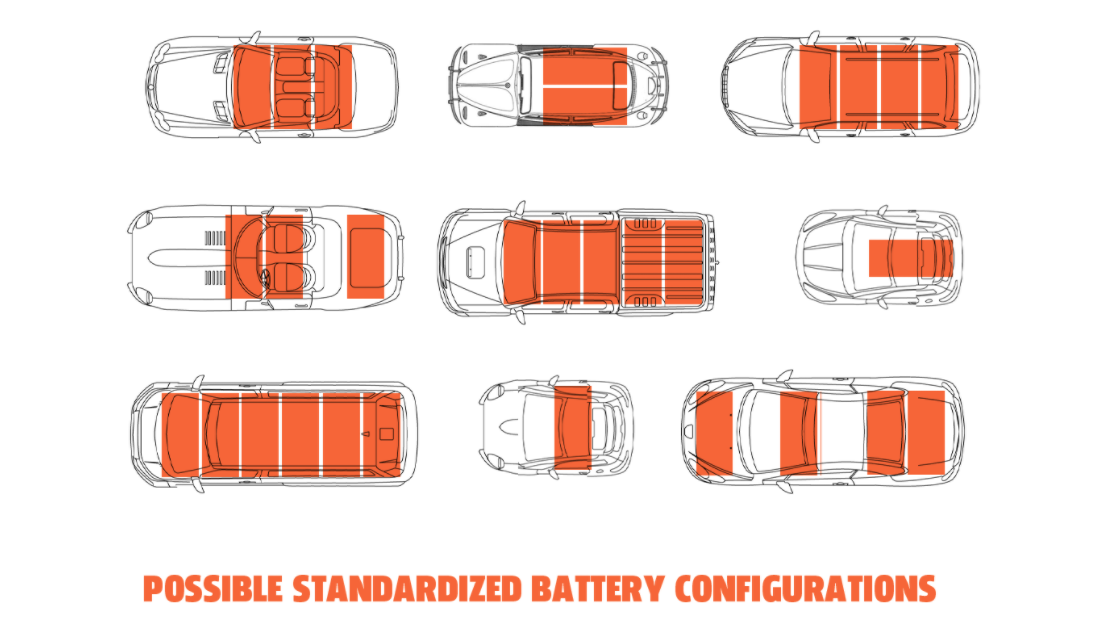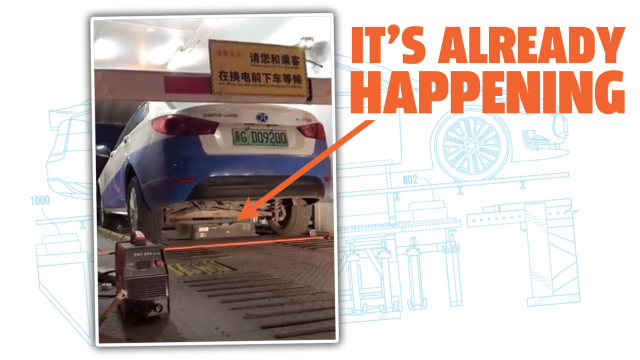If the future of automobiles is truly going to be electric — and at the moment that’s what it looks like — then batteries should be easily swappable. Period. I know most of the industry is loath to do this, with big-deal companies like Tesla coming out definitively against it, but the truth is even if swappable batteries aren’t what the carmakers want, it’s much, much better for consumers, and that’s who I care about. Those CEOs can eat dog food for all I care. Don’t believe the claims that battery swapping is too expensive or impractical, because it’s already happening, quick and cheap, in China.
I was reminded of this thanks to this tweet from a little while ago regarding a BAIC electric taxi in a battery swap station in a mountainous area of Northern China known as Hebei:
My taxi in Hebei ski country just pulled off for two-minute battery change by robot. A fresh battery lasts 150km in winter, says driver. He pays 45yuan ($7) for a fresh battery. Impressive system, all the more for being totally workaday, not exotic. Future here now for China EVs. pic.twitter.com/l8DkUtW2pA
— David Rennie 任大伟 (@DSORennie) December 22, 2021
Look what’s going on in that video. The battery — which isn’t too huge but good for a reasonable 95 or so miles in winter conditions — gets swapped out in minutes. The video seems to just show the installation of the new battery part, which takes about 45 seconds, so if we assume it’s about the same for the removal, and maybe add some extra time because why not, we’re still talking about a three to five-minute process here. The tweeter pegs it at two minutes.
Then, let’s take a good look at that facility; a lot of the criticism of battery swapping is the claim that building facilities that can handle the task would be wildly expensive. I’m going to go out on a limb and say that I don’t think the facility seen in that tweet is hugely expensive.
It looks like it does its job well, but it’s hardly opulent and looks to be about as complex as a drive-through automated car wash, and those aren’t exactly Taj Mahals.
It’s also worth noting that this video shows it being used by a taxi, which would be a market of cars most interested in quick battery-recharge turn-around times, as time is very literally money for a cabbie.
That’s also noted in this video about battery swapping stations from June 2020, where they note that there are 452 battery-swapping stations in China. This article from October puts the number at 504 stations for just one company, NIO, and Geely has plans to build 5,000 stations by 2025.
As the video notes (and as I’ve noted multiple times) the ideal situation would be if battery sizes and connectors and output could be standardised, modular units so that battery swapping stations could be as universal as gas stations are to cars today.

The arguments made by carmakers as to why they do not want to build cars with removable batteries or standardised batteries usually revolves around the weight advantages of making battery packs structural or claims that carmaker’s own proprietary designs will be superior in energy density and range.
I don’t think these arguments are wrong, but I do think they don’t really matter. Swappable batteries could still be charged at home, just like integrated batteries, but when travelling, a full recharge would take 5 minutes instead of 30 or so, at best. That’s a really big difference.
Plus, integrated batteries are really only beneficial to the carmaker, not the consumer — and, again, I care more about the consumer, and unless you own a car company, I think you should, too.
Remember that video of that Finn who blew up his Tesla Model S with dynamite that looked like salamis? He did that because his eight-year-old-car needed an entirely new battery pack, and replacing it would have cost about $30,500. Blowing it up with TNT was his sensible financial decision, which should be a pretty good clue that maybe integrated, hard-to-remove, proprietary batteries aren’t such a hot idea.
Integrated batteries will mean that in the near future, every used EV on the market has a potentially cripplingly expensive time bomb built into its floor. Sure, batteries have had longer lifespans than we expected a decade ago, but they still degrade over time and are by far the most expensive component of an EV to replace. Why the hell would you want something like that built into your car as a crucial structural element?
I know I wouldn’t. Swappable batteries could remain in circulation, getting re-used and re-charged over and over. Then, when they reach the end of their useful automotive lifespan, they could be re-purposed to act as batteries for solar or wind power stations or any number of other applications.
Battery swapping just makes more sense, long-term, for EV owners. And it’s already started in China. If they can do it there, we can do it here, and don’t let any carmaker CEO tell you otherwise, because screw ‘em.
This article has been updated since it was first published.
